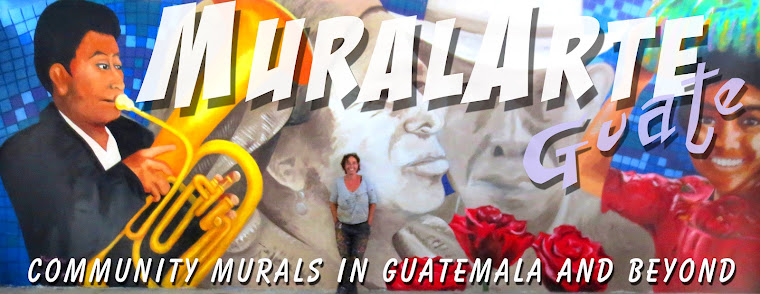Besides beautifying the
surroundings, murals are usually painted in public spaces and thus make art
free and available to the entire community. Murals can be educational or
informative and even break social, cultural or political barriers. The
community is always involved in the process, regardless people’s talent, skill
or experience. A mural can help define the cultural identity of a community and
create community ownership. It can become a landmark in the community,
inspiring and attracting more artists or visitors.
Although
Guatemala
counts with many ancient constructions dating from the Pre-Columbian Maya era and Colonial
times, much more common are the recently cheaply built cinder-block walls that
stand in strong contrast to the colourful and intricate designs of the
traditional Maya clothing. But while many people still dress traditionally, the
younger generation more and more prefers skinny jeans and caps over their ancestors’
tradition and hand-woven clothing. Even in a country where national pride is
so strong, cultural identity is fading quickly.
Already
a tradition in the time of the ancient Maya, a mural is a shared creation that
unifies people, not to speak of the message a mural often communicates, being
it an expression of cultural identity or a more explicit message about human
rights or protection of the environment. Murals are relatively cheap and
easy to create but have a widespread and long-lasting effect on the community.
Murals don’t make peoples less hungry or sick, but they do feed a sense of
community, cultural identity and pride. And thus we'll keep creating murals, in Guatemala and elsewhere in the world!
 |
| Mural and its artists in Ostua, Cobán (Guatemala) |
